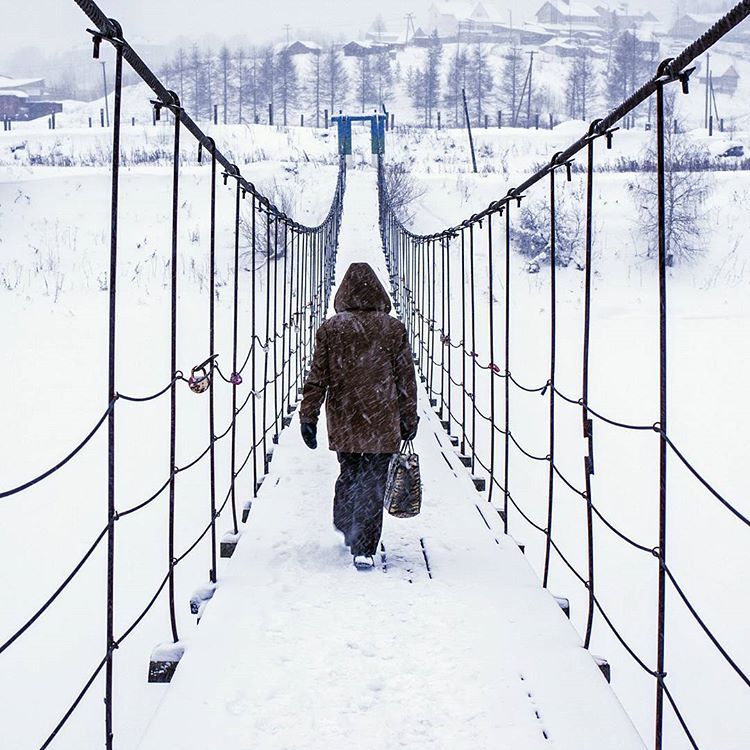Russia might be going through turmoil right now, but it is still a very interesting place, with the Komi Republic being one of the most fascinating subjects of the Russian Federation.
The vast country of Russia holds many secrets. Whilst many associate Russia with Moscow and Saint Petersburg, the biggest country in the world is made up of a patchwork of republics, all with their own unique traits, history, culture and sometimes language. As the Soviet Europe team here at Young Pioneer Tours extend our reach across Russia and explore all of the 21 Russian Republics, we bring you another installment of our guide to every republic across the Russian Federation! In this blog we’ll be exploring the Komi Republic.
The name ‘Komi Republic’ is one that tends to conjure interest. Located to the west of the Ural Mountains and included in the Arctic Circle, some of the Soviet Wastelands team have passed through this little-known republic with a dark Soviet history and even its own language.
The locals in Komi region even speak their own language alongside Russian: The Komi language, which is a Uralic macro-language. So, we decided to provide an insight into the gigantic Republic of Komi that is 70% forest and 15% swamp, but that is also heavily industrialised and has huge links to Russian organized crime.
A brief history of the Komi Republic
The original Komi people date back as far as the 12th Century Novgorod Republic, and settled in the area when they came hunting for animal furs and hides. It came under the rule of various Russian kingdoms and, in the late 18th century, under the reign of Catherine the Great, it was used as a penal colony for the first time. Subsequent expeditions of the area in the 19th and early 20th Century led the Russians to discover a wealth of minerals and timber that they could harvest.
After the establishment of the USSR in 1922, the Central Committee founded the Komi-Zyrian Autonomous Oblast which subsequently became the Komi Autonomous Soviet Socialist Republic in 1936. Soviet control brought new settlers to the area that would replace the original Komi people and start the beginning of the republic’s dark future: hundreds of thousands of gulag prisoners sent to carry out forced labour in the Soviet Arctic.
Soon the untouched Taiga was ravaged by gulag industrialization. All of the Komi Republic’s major cities: Vorkuta, Ukhta, Syktyvkar, Pechora, Vorkuta, and Inta as well as roads, railways and other infrastructure were all built by gulag prisoners in gruelling conditions.
A history drenched in the blood of prisoners
One of the worst gulags in the area was Vorkuta, located 99 miles above the Arctic Circle. It was used to mine the Pechora Coal Basin and the city of Vorkuta was built as a result of the nearby camp. Not only were Russian enemies of the state held here, but a plethora of people: Poles captured during the short lived Soviet-Nazi alliance of 1939, Nazis captured during WW2 and dissidents and enemies of the state from newly acquired Soviet republics such as Latvia, Estonia and Lithuania.
A camp uprising in 1953 was ruthlessly put down by Komi Republic; soldiers opened fire and killed 53. After the collapse of the USSR, the Komi Republic enjoyed a short period of autonomy when, in the mid-1990s, the local authorities signed an autonomy-granting power-sharing agreement with the Russian government. The agreement was later torn up in 2002.

The homeland of Russian organised crime
With its modern origins born from the gulags, it should come as no surprise that the harsh, industrial republic is associated with Russian organized crime. It’s estimated that out of the 40,000 people collecting state pensions in the Vorkuta area alone, over 32,000 are former gulag inmates or ancestors thereof. It’s therefore not uncommon to see men with classic Russian Mafia tattoos in rough areas.
In 2015 Vyacheslav Gaizer, a Russian mob boss and politician, who was the head of the Komi Republic between 2010 and 2015, was arrested by Russian authorities along with 18 of his accomplices and all were charged with organizing and running a criminal gang involved in the theft of state property on a mass scale. He was sentenced to 11 years in jail.
The record label ‘Komi Krime’ takes its name from the Republic and the dark, violent and crime-based lyrics of its main rap artist Gio Pika, a native of the Komi Republic, can be heard in prison corridors throughout the post-Soviet world. Gio is seen as a Russian mafia symbol and one of his best hits was Black Dolphin, paying tribute to the maximum security prison near the Russian border with Kazakhstan – infamous as the worst prison in Russia. Here, prisoners and guards alike agree that the only escape from the Black Dolphin is by dying.
Can you visit the Komi Republic in 2024?
Despite the war in Ukraine, Russia remains open and relatively welcoming to tourists and tourism. This means a visit to the Komi Republic is relatively easy. Whether you currently wish to visit Russia over ethical reasons is though another story. .
To visit the Komi Republic and any other Russian Republic on a customized private tour, contact YPT today for a quote and let the adventure begin!





